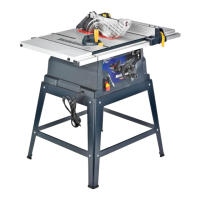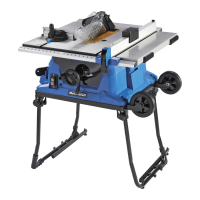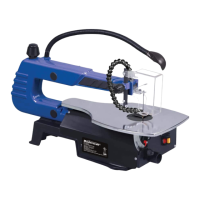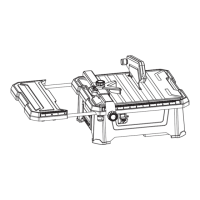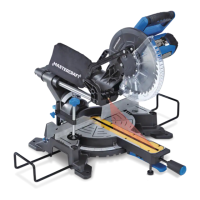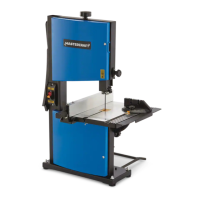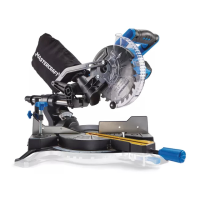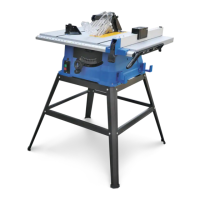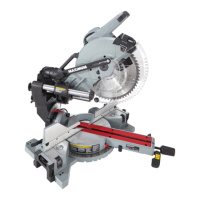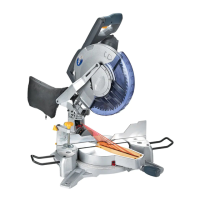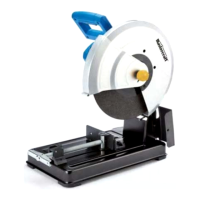4
cord length and the nameplate amperage rating. If in doubt, use the next
heavier gage. The smaller the gage number, the heavier the cord.
10. WEAR PROPER APPAREL Do not wear loose clothing, gloves, neckties,
rings, bracelets, or other jewellery that may get caught in moving parts.
Non-slip footwear is recommended. Wear protective hair covering to
contain long hair.
11. ALWAYS USE SAFETY GLASSES. Also use a facemask or dust mask if the
cutting operation is dusty. Everyday eyeglasses only have impact-resistant
lenses. They are NOT safety glasses.
12. SECURE THE WORKPIECE. Use clamps or a vise to hold the workpiece
when practical. It’s safer than using your hand, and it frees both hands to
operate the tool.
13. DON’T OVERREACH. Keep proper footing and balance at all times.
14. MAINTAIN TOOLS WITH CARE. Keep tools sharp and clean for best and
safest performance. Follow instructions for lubricating and changing
accessories.
15. DISCONNECT TOOLS before servicing and when changing accessories,
such as blades, bits, cutters, and the like.
16. REDUCE THE RISK OF UNINTENTIONAL STARTING. Make sure the switch
is in the off position before plugging the tool in.
17. USE RECOMMENDED ACCESSORIES. Consult the Owner’s Manual for
recommended accessories. The use of improper accessories may cause a
risk of injury to persons.
18. NEVER STAND ON THE TOOL. Serious injury could occur if the tool is
tipped or if unintentionally contacted.
19. CHECK DAMAGED PARTS. Before further use of the tool, any guard or
other part that is damaged should be carefully checked to determine
whether it will operate properly and perform its intended function. Check
for misalignment or binding of moving parts, broken parts or mountings,
and any other condition that may affect the operation of the tool. A guard
or other part that is damaged should be properly repaired or replaced.
20. DIRECTION OF FEED. Always feed the workpiece into the blade or cutter
against the direction of rotation of the blade or cutter.
21. NEVER LEAVE THE TOOL RUNNING WHILE UNATTENDED. TURN THE
POWER OFF. Don’t leave the tool until it comes to a complete stop.
SPECIFIC SAFETY RULES
1. GUARD AGAINST KICKBACK. Kickback occurs when the blade stalls
rapidly and the workpiece is driven back toward the operator. It can pull

